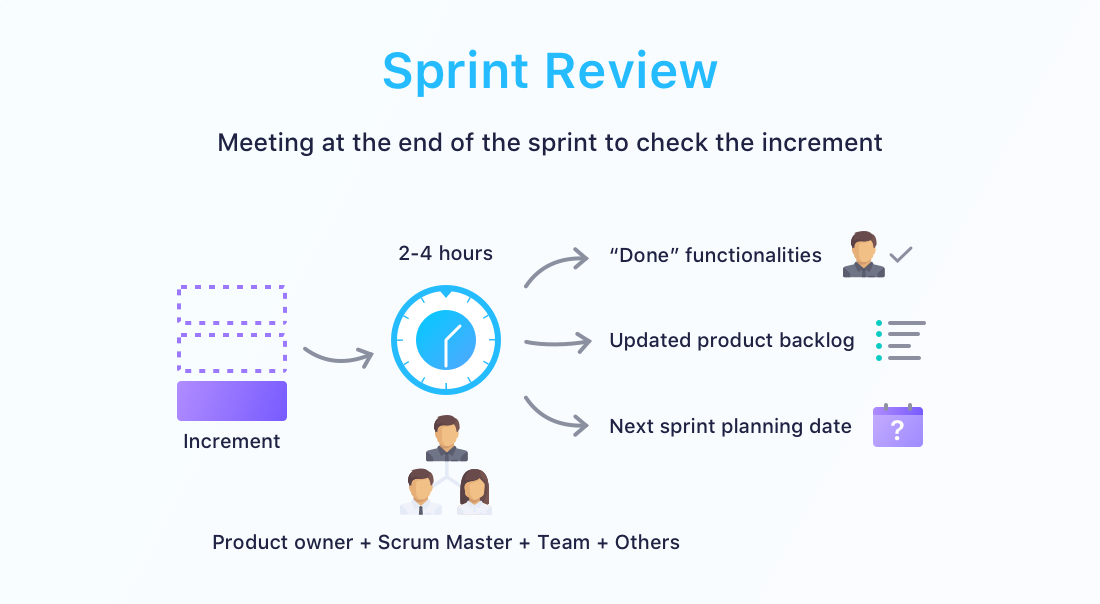Community resources
Community resources
The WHAT, WHEN, WHO and How to SCRUM(part 1)
 This tutorial explains what Scrum is when to use it, and the right way to use Scrum. This tutorial is divided into the 3 and in this first part, we’ll cover What Scrum is.
This tutorial explains what Scrum is when to use it, and the right way to use Scrum. This tutorial is divided into the 3 and in this first part, we’ll cover What Scrum is.
At the end of this tutorial, you should be able to
- understand and explain what Scrum is
- understand and use Sprints(which is like the heart of Scrum)
- Understand the Roles in Scrum
- Understand and practice Scrum ceremonies
Seatback, grab your anti-glare glasses, and enjoy the read.
So what is Scrum?
According to scrum.org - > Scrum is a framework with which people can address complex adaptive problems, while productively and creatively delivering products of the highest possible value.
Coming down to software development, Scrum is an agile, iterative, and incremental framework used in developing, delivering, and sustaining complex software products. With great emphasis on iterative and incremental, Scrum is not a one-off thing. One of the key things to note is that the Scrum teams are very open to and responds to stimuli that always bring about iterations and increments.
To understand the Scrum framework properly, one must understand the HEART of Scrum which is the SPRINT

With all the activities and ceremonies that go on in the Scrum picture above, notice that the Sprint stands out, and thus, the heart of Scrum.
Sprint: Think of the sports world where sprints are short races, now applicable to the software world, a sprint is a short, time-boxed period(not more than 1 month, but ideally 2- 3 weeks)when a scrum team works to complete a set amount of work. With Scrum, software products are built in a series of iterations(unlike in sports) called sprints that break down complex projects into bite-sized pieces, this enables the delivery of successful and scalable software products.
Now having known that the Sprint is the heart of Scrum, it’s crucial to understand how to plan and execute successful sprints.
- Sprint Planning: Sprint planning is an event(between 4–8 hours)in Scrum where the team determines the goal, and product backlog items they plan to achieve during that sprint and discusses their initial plan and timeline for completing those backlog items. The sprint planning session kicks off the sprint by setting the agenda and scope for the sprint. Planning and executing successful sprints is very vital in the Scrum framework.
Who is involved in Sprint Planning?: Now this question answers the roles involved in Sprint Planning.
- Product owner: The product owner describes the goal and objectives to be achieved during the sprint. The product is in charge of “what” is to be built and manages that in the product backlog. She/he is in charge of the backlog prioritization which is a very part of the product development timeline that aims at shipping the right features at the right time. She/he communicates the product backlog to the team and makes sure the backlog is transparent and well understood.
- The Scrum Development Team members: The development determines the “how” to achieve the goal and objectives of the sprint and delivers the sprint goal. However, the resulting sprint plan is a negotiation between the development team and product owner based on value and effort.
- The Scrum Master: The Scrum master plans and facilitates the scrum meeting, motivates the team members, and ensures that the discussion is effective and that there is an agreement to the sprint goal and that the needed product backlog items are included in the sprint backlog.
Scrum Events and Ceremonies
Scrum ceremonies are important elements of the Scrum frame and agile methodology for effective and successful software development and shipping. More than just mere meetings, the Scrum ceremonies help the Scrum framework to be practiced in a structured manner, help motivate and empower the Scrum team members to collaborate and deliver in an agile way and eventually drive continuous delivery and a successful software product. We’ll cover the Scrum ceremonies as outlined below.
- Sprint Planning(as explained above)
- Daily Scrum
- Sprint Review
- Sprint Retrospective
- Daily Scrum: Also known as daily standup, the daily scrum is a Scrum ceremony or event practiced every working day, typically in the morning by the Scrum Team members to quickly update everyone of what’s going on across the team. The duration is advised not to be more than 15 minutes, hence the name “daily stand-up”, where members practically stand up during the meeting in order not to spend much time. For remote teams, the Scrum master can use the time-boxed approach to ensure that the set time is not exceeded. During this meeting, team members answer 3 major questions as follows;
- what did I do yesterday?
- what will I do today?
- am I currently blocked by anything?
Answering and reporting what you did in front of your team members helps to make you accountable as no one would want to be reporting they did the same thing every day and not making progress.
- Sprint Review: The Sprint review happens at the end of the sprint where the Scrum team members and stakeholders review what was finished and not finished during the sprint with the aim of inspecting the outcome of the Sprint and determine future adaptations.

- Sprint Retrospective: Usually the last thing done after a sprint review, the Sprint Retrospective is a meeting that presents the opportunity for the Scrum team to inspect itself an improvement plan. Often confused with the Sprint Review, while sprint review is a discussion about what the team is building, sprint retrospective is focused on how they’re building it.

Yeaaah, kudos for reading to the end of this part.
Key points to take home
- Scrum is an agile framework that helps software teams solve large problems by dividing them into sprints
- Sprint is the heart of Scrum and encourages reviews, open-mindedness, change to stimuli, and continuous improvements to building products that satisfy the users.
- The Scrum events and ceremonies are important to keep all the members of the Scrum active and committed during the process.
- Everyone in the Scrum team is super important and should work collaboratively to achieve the team goal.
If you found this interesting and helpful, you can follow me to get notified of when the remaining part of this tutorial is published. Feel free to leave any questions or concerns via mail or on Twitter
Was this helpful?
Thanks!
Gloria Ojukwu

About this author
Product/Project Manager| Atlassian Lover I Community Builder
Phreetech
Nigeria
5 accepted answers
TAGS
Atlassian Community Events
- FAQ
- Community Guidelines
- About
- Privacy policy
- Notice at Collection
- Terms of use
- © 2024 Atlassian





2 comments